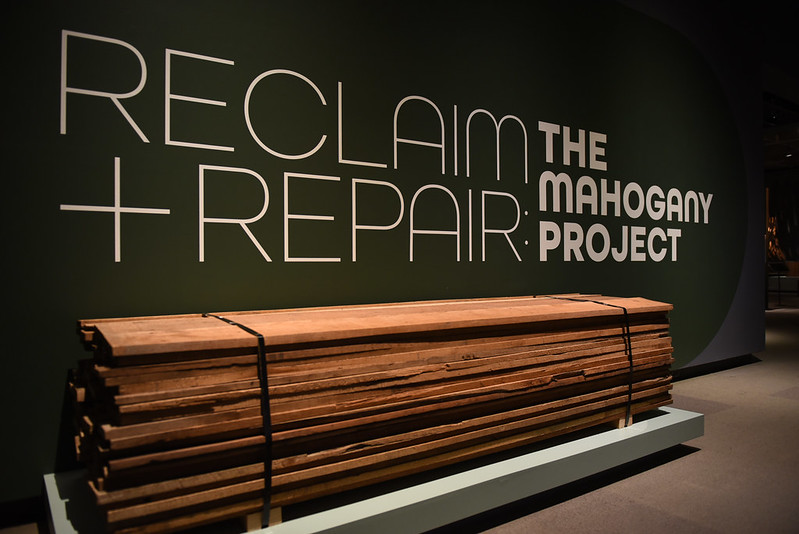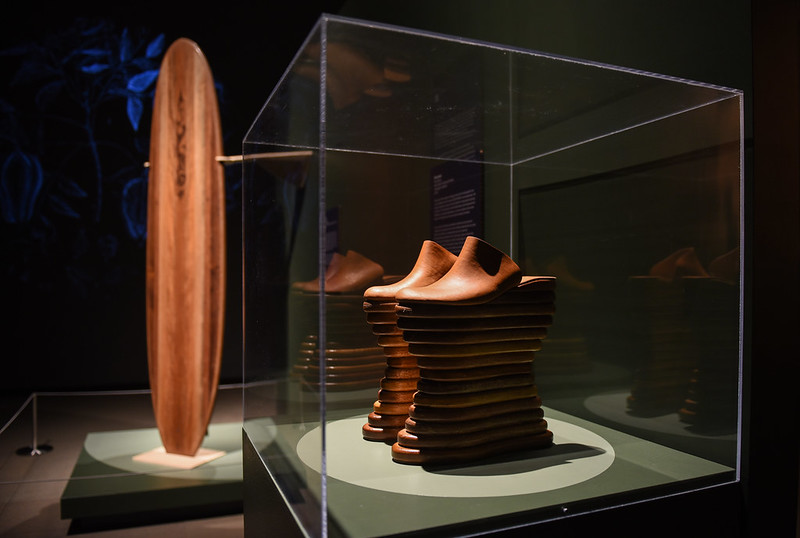Case Example: Reclaiming Circular Design at the Museum of Vancouver
Reclaim + Repair: The Mahogany Project
Museum of Vancouver
Vancouver, Canada

Reclaim + Repair: The Mahogany Project celebrated the creativity and craftsmanship of Vancouver’s design community while addressing questions of social and environmental justice and the role of design in advancing sustainability.
In 2022, the Museum of Vancouver (MOV) was gifted a large quantity of mahogany lumber. This rich hardwood, harvested in Central America, was originally brought to Vancouver for use in shipbuilding during the 1950s and 1960s but remained in storage for decades. Collaborating with Propellor Studio, a Vancouver-based design studio and SAGE partner, MOV distributed the wood to local artists and designers, aiming to create an exhibition showcasing mahogany objects crafted by creatives committed to sustainable design. Selected artists and designers were given five months to complete their pieces. The results were remarkable: slender mahogany boards were transformed into striking furniture, wearable art, watercraft, and sculptures.
Beyond the mahogany pieces crafted by the artists and designers, The Mahogany Project incorporated circular practices in both its design and execution, demonstrating the potential of a networked community of designers, fabricators, and material suppliers working collectively to address circularity challenges.
The overall exhibition scenography was simple and elegant, with walls painted in dark green and gray to create a dramatic effect, complemented by a few wall projections that animated the space. Instead of using vinyl lettering, the large title was hand painted. Rather than using curved-shaped display cases and plinths, painted curves were applied to break the rigid lines of the display units, avoiding material offcuts and enhancing their reusability. The backlit panels featured a framing and lighting system designed for reuse, allowing images and interpretive texts to be swapped for future projects.

Some of the exhibition walls and plinths were constructed from materials reused from previous MOV exhibitions; others were donated by a SAGE partner. This partnership was mutually beneficial: MOV received free materials, while the partner saved money by avoiding waste removal costs. The only new material purchased for this exhibition was the printed content for the backlit interpretive panels and smaller text panels produced on corrugated cardboard, a low carbon substrate.
Of note, MOV integrated a reparative element into the project by supporting reforestation efforts in Guatemala, where the wood originated. The exhibition narrative also explicitly linked the local project to the environmental impact of global markets and colonial histories.